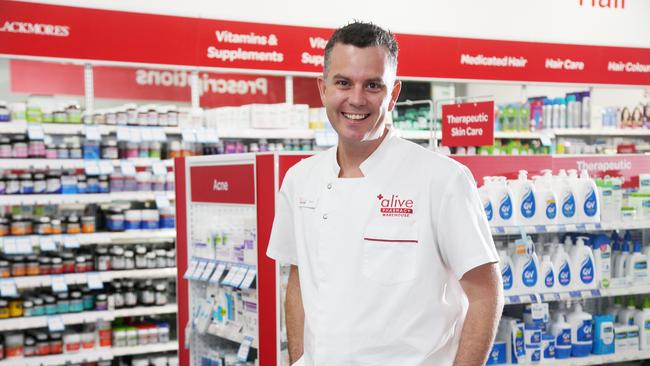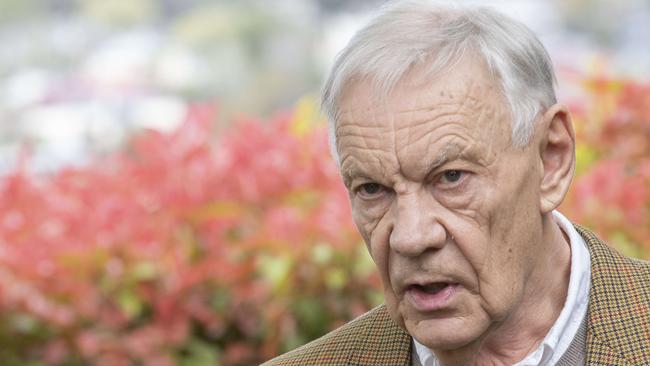Federal election 2022: Why some medicines could rise in price under Labor and Coalition policies
Few patients will benefit from the major parties’ promise to cut the price of medicines and some people could end up paying more under an anomaly. See the full list.
Federal Election
Don't miss out on the headlines from Federal Election. Followed categories will be added to My News.
Just six of the nation’s 50 top selling medicines will get cheaper after the election despite both major parties promising to cut prices.
And patients who shop at discount chemists could find the cost of at least five of the most commonly prescribed drugs rise by up to $17, a News Corp analysis has found.
The Coalition has promised to cut prescription prices by $10 after the election and Labor by $12.50 but very few patients will actually benefit from these price cuts.
For a general patient to benefit from these cuts their medicine has to cost more than $32.50 in the case of the Coalition or $30 in the case of Labor.
A Pharmacy Guild analysis found only 12 per cent of medicines on the PBS cost more than $30.
And Guild president Trent Twomey has claimed the Liberal Party’s $10 cut would only help 3 per cent of patients.

News Corp checked the price of the 50 most-prescribed medicines and found just six of them – antidepressant Escitalopram, blood thinners Apixaban and Rivaroxaban, asthma medicines Fluticasone propionate/Salmeterol and Budesonide/formoterol, and pain medication Oxycodone/Naloxone – would get cheaper.
The price of the other 44 most commonly prescribed medicines will not be cheaper, with most already costing $19-$23 at a suburban pharmacy and as little as $5.99 at discount chemists.
However, we did find that the price of five medicines could rise under the election policies depending on their dosage level.
These include pain medication pregabalin, antidepressant desvenlafaxine, thyroid drug Levothyroxine, pain medication Oxycodone/Naloxone and some liquid forms of asthma treatment Salbutamol.
Further analysis of the entire PBS found 294 medicines could rise in price under Labor’s promise and 245 under the Coalition’s.
At present chemists are only allowed to discount medicines that cost less than the PBS co-payment of $42.50.
Chemist Warehouse boss Mario Tascone warned last year an unintended consequence of reducing the co-payment was customers of his discount pharmacy chain may have to pay more for some medicines if they wanted them to count towards the PBS safety net.

When the co-payment drops to $32.50 under the Coalition and $30 under Labor, medicines priced between these amounts and the old $42.50 co-payment would no longer be able to be discounted.
Chemist Warehouse customers currently paying $14.99 for a 150mg script of pain medication pregabalin (the medicine is priced at $31.53 on the PBS) could see the price jump to $30 under Labor’s policy.
Discount chemist customers currently pay $15.39 for a 10mg script of oxycodone (the medicine is priced at $33.74 on the PBS) but this could jump in price to $32.50 under the Coalition’s new co-payment.
Opposition health spokesman Mark Butler said “no one will be worse off under Labor’s cut to general patient co-payments”.
“We are committed to ensuring that scripts currently discounted will still be able to be discounted and to count towards the safety net,” he said.
However, he was unable to explain how he would achieve this goal.
“There are several ways to implement the no one worse off guarantee and Labor will seek departmental advice and consult with stakeholders on the most appropriate approach,” he said.
The government has pledged that “all scripts currently counting towards a patient’s safety net will continue to do so”.
“Changes will be made to the National Health Act to ensure that scripts currently sold under the current general PBS co-payment that are counting towards a patient’s PBS safety net will continue to do so,” a spokesman for Health Minister Greg Hunt said.
It too has not explained how it will enable these changes.

Health analyst Martyn Goddard who used to serve on the committee that approves medicines for subsidy said “simple reforms to drug pricing would save the government much more than the co-payment bring in”.
“These reforms would involve putting the supply of generic drugs out to tender, and reforming the evaluation of new drugs so it gave a more accurate estimate of cost-effectiveness,” he said.
Originally published as Federal election 2022: Why some medicines could rise in price under Labor and Coalition policies





